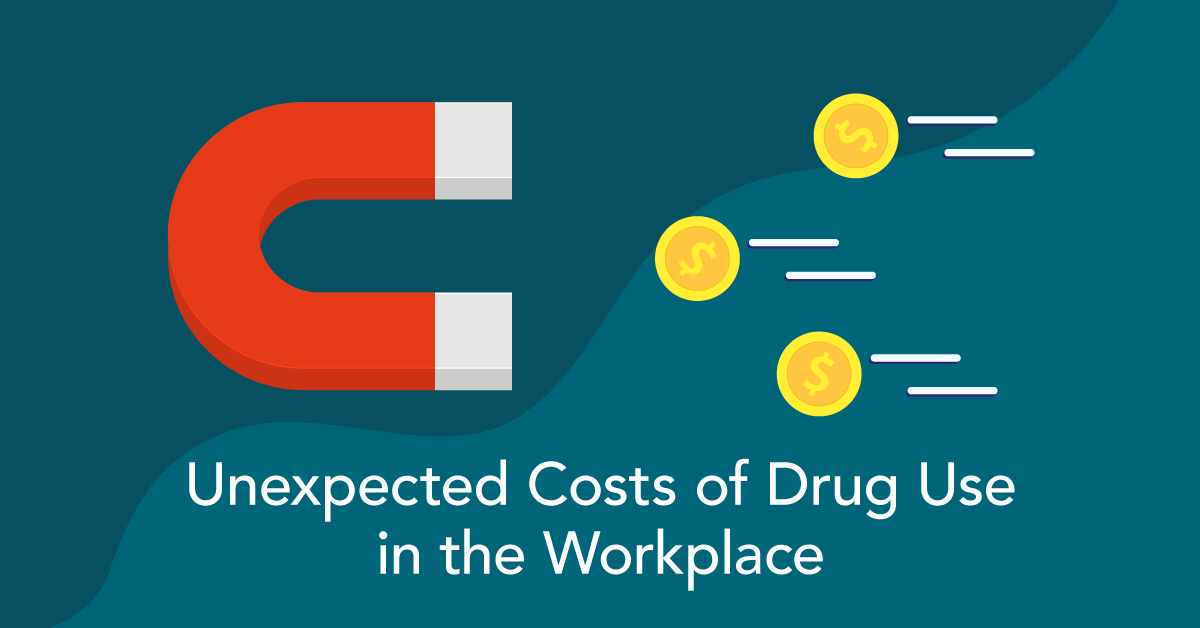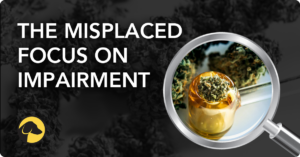
The Unexpected Costs of Drug Use in the Workplace
Almost everyone involved in workplace safety – from employers to drug testing providers – agrees on one data point: cannabis is the drug driving positivity rates. So why are employers considering dropping THC from their testing panels when they know it’s an impairing substance that brings negative consequences to the workplace and their bottom line?
The answer can be found in an unexpected way: by examining the link between a fitness app and a bathroom scale.
INDULGENCE
When speaking about the change in cannabis laws in the United States and the impact of those changes for workplace drug testing, I often use the example of a luxury hotel room. Although luxury accommodations often anticipate your every need to provide an amazing experience, one item often missing from rooms is a simple scale.
Good scales are not cost-prohibitive given the room rate, so why don’t they appear in bathrooms for guests? Well, consider the outcome that hotels are seeking. They not only want you to have a great experience and return as a guest, but they also want you to spend money in the hotel. One of the most profitable ways to do that is on food and drink. The more you eat and drink during your stay, the more money the hotel makes. And many of us do just that, throwing caution to the wind and ordering a poolside piña colada or a rich dessert after dinner… and, let’s be honest, for lunch, too.
With no scale, we may repeat this behavior over the entirety of our stay but only know the true impact when we get home and step on the bathroom scale. The numbers don’t lie, but the damage is done.
HOW DO FITNESS APPS RELATE?
There are an estimated 86.3 million smartphone users who use at least one fitness app. That is a steady increase from the 62.7 million in 20181. Those apps may connect to watches, fitness bands, exercise equipment, or myriad other devices through which users track everything from the number of steps and heart rate to blood sugar and ovulation predictors. The uses are numerous, but most have a single thing in common, they are leading indicators. A leading indicator looks forward to future outcomes, while a lagging indicator, like a scale, looks back to measure an intended result was achieved. When evaluating cannabis testing, this concept is important for forward-minded leaders in organizations focused on implementing a successful and sustainable drug testing program.
Fitness apps have gained popularity because they allow users to track behaviors that may lead to a successful outcome. Unlike the scale that only shows the outcome of past performance, the apps track and reinforce behaviors that may lead to a positive outcome of a future event.
TURNING A BLIND EYE
Consider how this applies to workplace drug testing. We often reinforce for employers the key outcome of workplace drug testing is to deter drug use while at work. Although a tiny percentage of testing is performed after an accident or when use at work is suspected by performance or behavior, most drug testing is performed to deter use and reinforce a company policy prohibiting workplace drug use.
However, some employers have opted to drop THC testing from their panel to combat the complexities of cannabis legalization and the worker shortage of the past few years. This mistake can cost them millions.
Data from 2021 shows the difference between urine post-accident and pre-employment cannabis positivity has increased nearly two times since 2013 in the general U.S. workforce and more than five times for the federally mandated safety-sensitive workforce2. This means dropping THC from a pre-employment panel is letting cannabis users into the workplace, where they may become a safety concern and costly risk.
In fact, we are already seeing the negative consequences if we carefully examine some other key workplace testing data:
- Year-over-year increases in cannabis positivity across all employee testing categories in 2021, with oral fluid positivity greater than 14%.
- Since 2013, states with recreational cannabis have seen an increase in general U.S. workforce cannabis positivity that is more than three times higher (131.8%) than states with neither recreational nor medical cannabis (42.9%).
- In 2021, general U.S. workforce urine cannabis positivity was more than 63% higher in post-accident testing than in pre-employment testing.
What is far more alarming is this increase doesn’t show the full extent of the problem because it is occurring while many employers in those same states are dropping cannabis testing from their panels – in fact, in some recreational states those numbers are over 15% of tests performed. One must assume if those companies had continued to test for THC, the increase in THC positives would be even greater than the record high we saw in the 2021 test data.
LEADING A PATH TO SUCCESS
We are seeing an increase in cannabis positivity that is highest in states where recreational use is legal. We are experiencing never before seen increases in post-accident cannabis positives, and we do not know how many accidents occurred for those companies that are no longer testing for cannabis use. However, we expect these lagging measures are likely to cost employers hundreds of millions of dollars.
Rather than rely on a lagging indicator (like a scale) of the cost of cannabis use at work, employers need to implement a leading indicator (like a fitness app) that allows them to continue testing while navigating the complexities of legal cannabis use.
The HOUND® CANNABIS BREATHALYZER will allow employers to measure only specifically isolated recent use of cannabis, which occurs immediately before or during work. Much like a fitness app, this solution will provide employers with a leading indicator deterrence tool supporting the desired future outcomes of a successful and sustainable drug testing program – while still balancing use of cannabis outside of work.
So, if we think of this as an analogy: a scale is to dropping THC testing as a fitness app is to the HOUND® solution. While the former is a risky measurement of past performance, the latter reinforces positive behaviors and builds toward the desired outcome. I don’t know about you, but I’d much rather wear a fitness app to track my progress rather than step on a scale and receive a negative surprise.
Like our blogs? Then sign up for our monthly newsletter. You’ll receive a selection of blogs, webinars, articles, and company announcements so you’ll always be in the know.
Footnotes

April 28, 2022
By NINA M. FRENCH
Share












